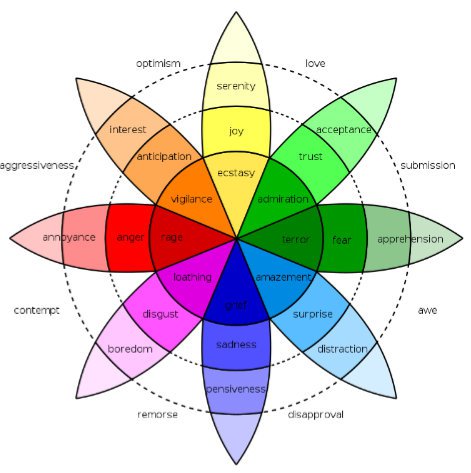It’s easy to see why websites were expensive 20 years ago.
No one knew how to make them.
Everything had to painstakingly hand-coded from scratch. Resources on the internet were scarce. YouTube and blogging haven’t been invented yet. You had to go to a book store and buy a physical copy of the one book available on that topic. And forget about downloading it on your Kindle. Those haven’t been invented yet either.
Today, a lot has changed. In a world of WIX and Squarespace, only our imagination seems to be the limit. We have WordPress and countless other content management systems with themes and plug-ins doing the heavy lifting.
Yet, websites still sell for a lot of money. Don’t be surprised to pay upwards of $10,000 for a website. How can this be if the technology is so accessible today? Let’s pull back the curtain on designing websites in 2019.
Your website’s purpose
Maybe you’re a photographer and all you need is a portfolio. You meet all your prospects on art conventions and tell them about your website. In that case, stop reading, head over to WIX and design your own website. All you need is a gallery and you’re good to go.

In fact, website builders are great for everyone who just wants a reference point on the internet. A place to send people to see your work. If you are the one sending people to your gallery, then anything else but WIX or Squarespace is overpriced.
But before you sign up, make sure you know what you’re signing up for.
All the work involved is on you. The hours can stack up quickly. Site builders are very user-friendly but they still have a learning curve. You will also need an eye for design. Things can start looking choppy quickly if you move things around too much.
You should also be aware that you’re stuck with the provider. If you don’t like them anymore, there is no way for you to export your website somewhere else. This could be frustrating if you want to add additional features in the future. If they don’t offer them, you’re out of luck.
Getting your ROI
Let’s talk about the rest of us.
Do you know the purpose of your website? This might be an obvious question. In reality, a lot of small businesses set up camp online just to keep up. Everyone has a website so we need one as well.
This reasoning might kill a lot of opportunities. What you’re really doing is hoping that people will somehow find your website and buy your stuff. Without a strategy to get there, you will likely get lost somewhere on page 86 of Google. And how many people do you know that look at more than the first two pages of search results?
Many businesses don’t treat their websites as an asset. They have no goals and therefore no way of knowing if they’re successful or not. We have to see our website as a real investment. It should be part of the overall business strategy and a cornerstone of finding new customers. A website should be more than a place on the internet. To reach its full potential, it should be part of a complete digital marketing system.
That’s where your website provides the real value.
It’s quite simple. You have to set specific goals and develop a strategy to get there. The goals are the easy part. Make sure they are measurable. It creates accountability for the project owner. You website goals could look like this:
- Generate 10% more leads in Q3 for product A.
- Increase scheduled appointments by 5% by January 2020.
- Add 3,000 subscribers to our blog by June 2021.
Now that you have your goals, it’s time to define a way to get there. This part is what really defines the value of your web property. It’s not about the features you can include. It’s about guiding your customer from the initial interest all the way to them taking action.
We’ll break down the specifics in the next section. We will start with your website and then tackle how they find you.
Your website
Many businesses rely on social media only. They set up a free fan page on facebook and drive all their traffic there. This is a huge risk because it makes you subject to policy changes and to the whims of the provider. They can close down your account for whatever reason. Their platforms exist to serve their goals, not yours.
Social media is a great tool to drive traffic to your website. This is the place you own. You have control over the way it looks and functions. You set your own rules and adjust it however you feel is right.
Who are your buyers?
Think about your customers. They are people with goals, values, feelings, and morals. They also have certain interests and associate themselves with certain groups. Those are the people they connect with.

The internet is filled with options but trust is scarce. People extend their trust only to people who understand them. You have to connect with your audience on a deeper level than just your product or service alone.
Connections are created on an emotional basis. This includes the way you write your copy, how you structure your information and how everything comes together in the layout.
You will also have to fight buyers remorse. It’s the feeling we have when we’re not quite sure if we will regret our decision later. It’s crucial to combat on the sales pages but it’s also a factor with every single click on your website. Your visitors are trading their time for your information. They don’t want to waste their time if they aren’t sure if it’s worth it.
You want them to say “OK, I trust this guy enough to click on another link”. Or read another sentence. Or pull out that credit card. They need to feel that they won’t regret their decision. It’s our jobs to provide enough value for them to actually take action.
To pull this off, you need to know your customers. Personas are great to get an overview but we’re more than a set of data. We’re emotional beings and our decisions are not based on logic. We use our logic to justify our decisions and make sense of the things we’re doing and believing.

Think of politics, for example. It’s easy to separate people into Democrats and Republicans. They are both very distinct groups. It gives us a clear picture of who they are and what they believe in. We take their values and split them up into arguments we can build our case around.
But in reality, humans are a lot more complex than that. A person can support traditional family values while hating guns. Someone else can hold a Ph.D. in Physics while denying global warming.
If we are honest with ourselves, we realize that most of us aren’t hardliners either. We are all very distinct humans who care about certain things. The art in catering to your audience is finding the common threat. Unaffected by their statistic.
Getting better
The complexity of our being makes it impossible to get it right every time. Just as we grow as humans, your website needs to get better at connecting with your people. As we learn more about others, we understand them better. You can put out your best efforts but only their part of the conversation will help you to know them.
With a website, we run into a fundamental issue. Our conversation is very one-sided. We don’t have the advantage of hearing their thoughts when they interact with our content. Unless we ask them.
Just like in a real conversation, you have to ask at the right moment. Context is everything. The same question might be annoying at one place but spot on somewhere else. You can get a lot of information with these two questions:
- What information do you need?
- What do you need it for?
The answers are often worth gold. Patterns will reveal the common thread.
The other way to find answers is testing. People are most honest about their thoughts in their behavior. Something speaks to them if they take action. We can measure those actions to find out what works.
This practice is called CRO. It stands for conversion rate optimization. You take two pages and send half of your traffic to one page and the other half to another page. The two pages are almost identical, except for the element you want to test. The goal is to determine which page results in more of the action you want the user to take.
To drive results, you not only have to understand what your customers want. You also have to know human psychology, in particular as it relates to our behavior on the internet. We are all different because of our experiences but we’re all made up by a few fundamental emotions. They all manifest in different ways but they lay at the core of our decisions.

Do you think converting visitors into customers is hard? It’s even harder to get them on your website in the first place. Especially in the beginning.
Advertisement
Advertising can give your traffic a huge boost. The most common platforms are Facebook and Google. Both companies make most of their revenue by selling ads. With technology on their side, they give us amazing possibilities to show up in front of the right people.
As with the site builders, Google and Facebook will abstract the tech and allow you to do your thing. You can convert a lot of people if you do things right. If you don’t, you’ll only waste money.
We often see imitations of what used to work on cable TV. Breaking the flow of entertainment and advertisers shouting “buy my stuff”. So we’ve learned to tune them out. The internet gave us control over the environment. Breaking my flow will annoy the heck out of me. I’ll remember that next time I see you.
The difference between success and failure lies in your message. You already show your ad to the right people. If it doesn’t work, it’s not enticing enough to take action. The same rules apply as we talked about earlier. Know your people and you’ll win.
Don’t sell them something right away. Take it easy. Offer them the chance to get to know you first. You wouldn’t propose to someone on the first date, right? Once you’ve established trust, you can take things to the next level.
You also have to be aware of how people use Google and Facebook. They are actively searching on the former and are passively scrolling through content in the later. You need to adjust your communication based on their state of mind.
Becoming an institution
While advertisement can serve as an accelerator, your backbone of expertise should be your website. The first contact with your brand has to manifest itself in a willingness to help your prospects solve a problem.
Your industry knowledge is what your prospects are after. If you can deliver it at the right time, it establishes you as an authority within your field. The common way is to publish your knowledge in the preferred medium of your customers. Think video, email, or podcast.
You need a way to plan, execute and distribute your content to the right people. You have to measure your engagement and ROI. If you get it right, your authority on the internet will start to grow. You will start ranking on the first page of search results and your fame will spread. More people will hear about you organically then your ad dollars could ever buy you.
And you go from there.
Provided value
The price of a website is not always determined by the ROI. You can pay a lot of money for a website that looks great. It might have fancy animations and pixel-perfect alignments. But if it doesn’t speak to your people your website is nothing more than WIX on steroids.
Pulling the trigger on a website can be tough. As we talked about earlier, humans are driven by emotions. Fear of regret is huge and we face it with full force if we enter a market we are not familiar with. We don’t know if what we’re paying for is justified. We are afraid of being taken advantage of and we are terrified of making big investments that turn out to be lemons.
If you’re interested a specific price breakdown, we’ve build the Visualizer software for that. We hope it will help you understand the costs for your web project.
